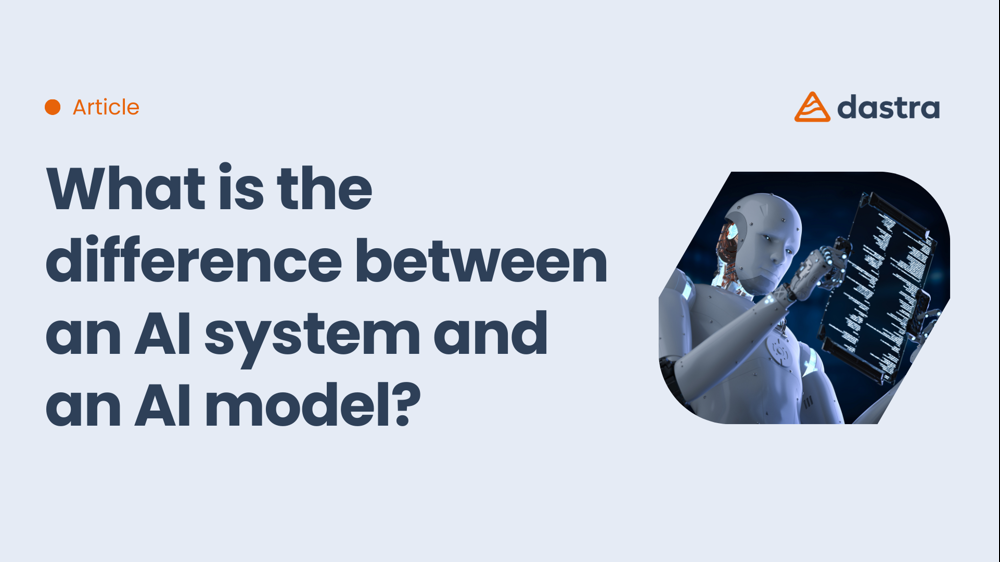Distinction between AI Model and AI System
Understanding the distinction between an AI model and an AI system is important for anyone interested in artificial intelligence, whether for developing new technologies or using them.
AI models are the fundamental components that perform specific tasks, while AI systems integrate these models into complete and functional solutions to address practical needs.
By recognizing these differences, one can better appreciate the complexity and scope of AI applications in various fields.
AI Model
An AI model is a central component of artificial intelligence. It is a mathematical or statistical representation of a specific problem, developed from data.
AI models are trained to recognize patterns, make predictions, or make decisions based on data.
The most common types of AI models include neural networks, decision trees, support vector machines, and regression models.
Examples of AI models include:
- Deep neural networks: Used for tasks such as image recognition or natural language processing.
- Decision trees: Used for classification and regression.
- Regression models: Used to predict continuous values.
- Linear regression: Used to predict future stock prices based on past prices and other information. Analyzes materials, machines, and time-based data to improve production processes.
- Random forest: Helps explain cases where treatments may have unintended effects or negative outcomes.
- Naive Bayes: Can predict real-time customer preferences based on their browsing behavior or purchase history.
The AI model is somewhat like the brain of AI. It is built and optimized through a training process, where it learns from historical data to improve its accuracy and efficiency.
AI System
An AI system is a broader and more complex application that integrates one or more AI models to accomplish a specific task.
It encompasses not only AI models but also the necessary components to collect, process, and analyze data, as well as interact with users.
In other words, an AI system is a complete solution that implements AI models within an operational framework.
Components of an AI system include:
- AI Models: Algorithms trained to perform predictions or analysis.
- Data Collection and Processing: Processes for gathering and preparing data for the model.
- User Interface: Means by which users interact with the system, such as web or mobile applications.
- Infrastructure: The hardware and software necessary to operate the system, such as servers and databases.
Example of an AI system includes:
- Virtual Assistant: Like Siri or Alexa, which use multiple AI models for speech recognition, natural language understanding, and generating responses, while integrating databases and user interfaces to interact with users.
- Recommendation Systems: Used by platforms like Netflix or Amazon to suggest content or products, incorporating collaborative filtering models and user data processing.
Key Differences between AI Model and AI System
Scale and Complexity:
- AI Model: is a specific component focused on a precise task such as prediction or classification.
- AI System: is a use case that integrates multiple components, including AI models, training data, to solve a problem or provide a service.
Components:
- AI Model: Only includes the algorithm.
- AI System: Includes infrastructure for deployment, user interfaces, data management, and AI models.
Functionality:
- AI Model: Provides an output based on data analysis.
- AI System: Uses this output to interact with users or other systems, often in real-time.
Register of AI Systems in Dastra
List your AI use cases and identify associated risks within Dastra.
